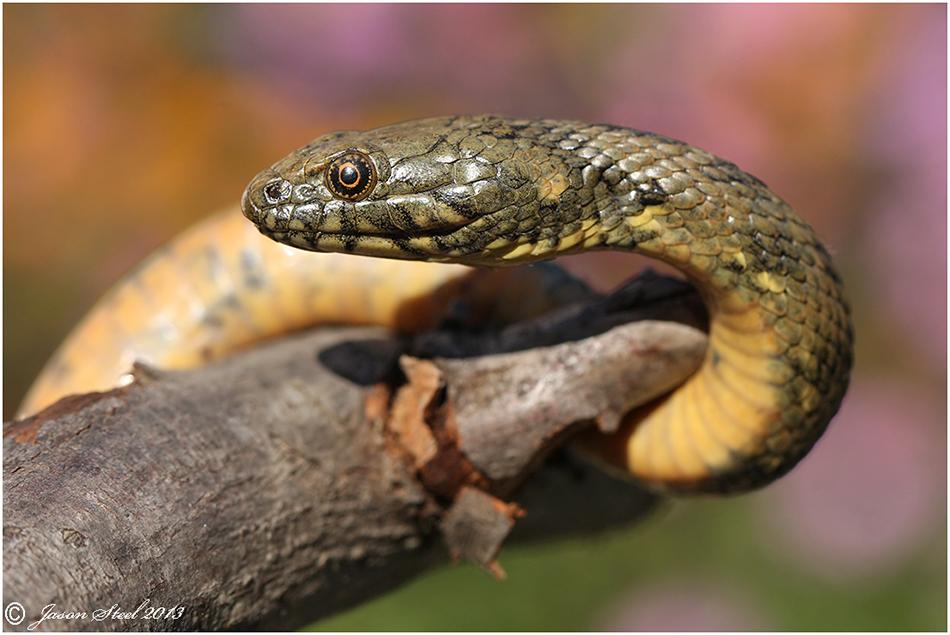
Viperine Water Snake - (Natrix maura)
Despite it's name the Viperine Water Snake is not a venomous viper. It is a harmless water snake found in or near streams, rivers and lakes. It is common across much of Europe and can also be found in North Africa and Tunisia. The Viperine Water Snake is often mistaken for a viper due to the patterning along its back and its threatening displays of defensive behaviour. It is not uncommon for this snake to flatten its head, hiss loudly and strike at people who it sees as a possible threat if cornered. However these strikes are usually done with a closed mouth and are a complete bluff. It is rare for this snake to actually bite a human even when handled.
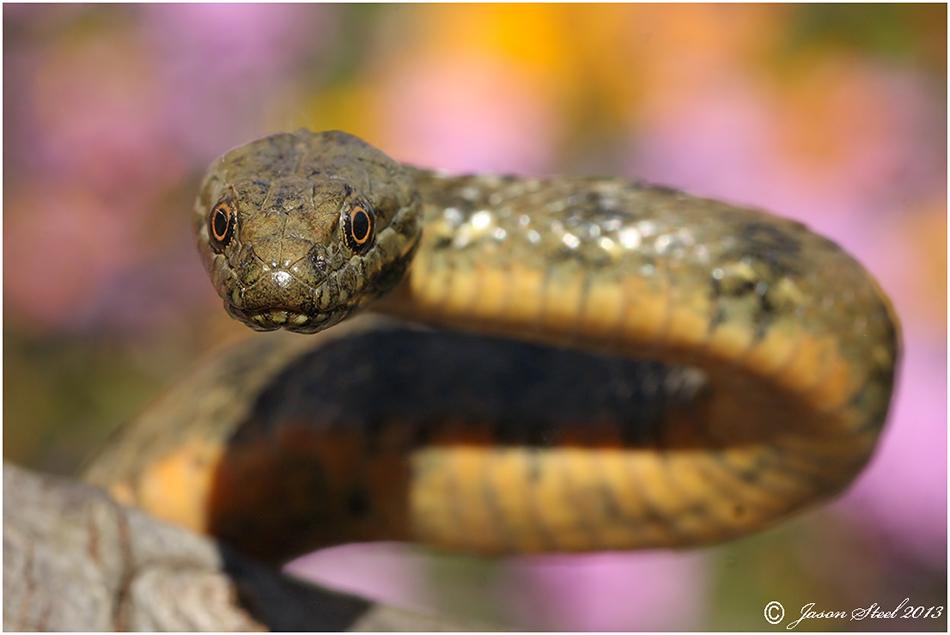
60cm Viperine Water Snake. By a shallow, freshwater stream in Calahonda, Spain. May 2013
This is a fairly small snake usually growing no bigger than around 3ft in total length with 60cm being the average size. These snakes can be found in shallow or deeper water and can even be found in brackish water. This snake pictured above was found in a very shallow stream just 20 metres before in joined the sea.
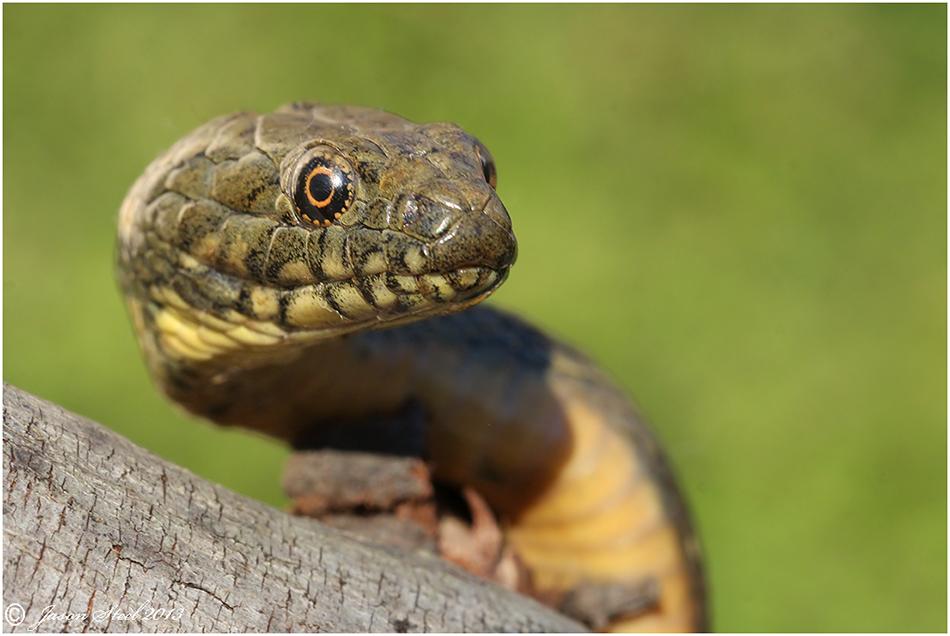
60cm Viperine Water Snake. By a shallow, freshwater stream in Calahonda, Spain. May 2013
These snakes behave in many ways just like Grass Snakes. The Viperine Water Snake will often emit a foul smelling liquid from its anal glands when handled to deter any would be predators. They sometimes use communial egg-laying sites which can also be shared with Grass Snakes.
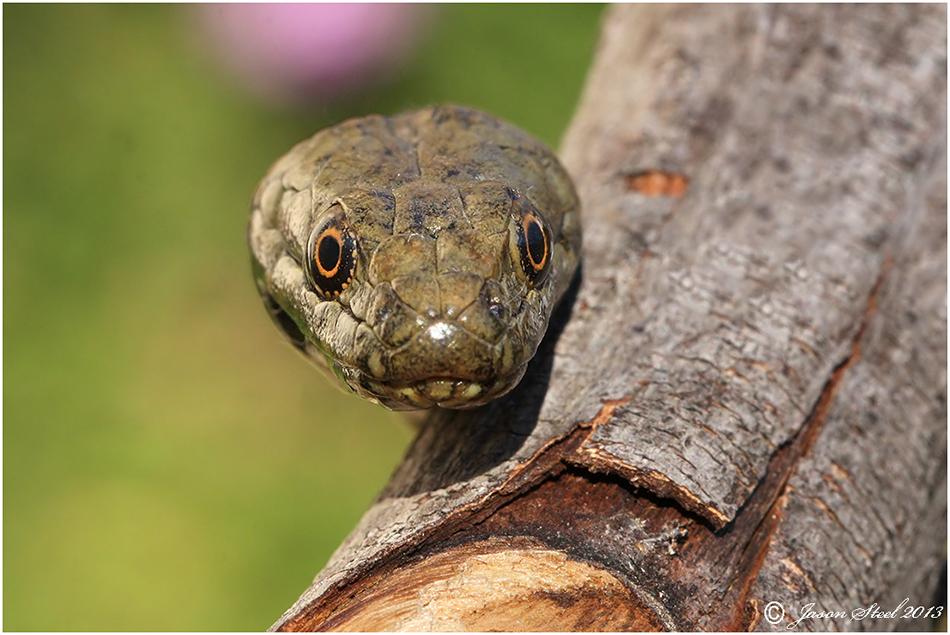
60cm Viperine Water Snake. By a shallow, freshwater stream in Calahonda, Spain. May 2013
As with the Grass Snake, the Viperine Water Snake will also often try to evade capture by heading straight for water and will usually swim straight to the bottom of the lake or river and hide under plants or rocks.
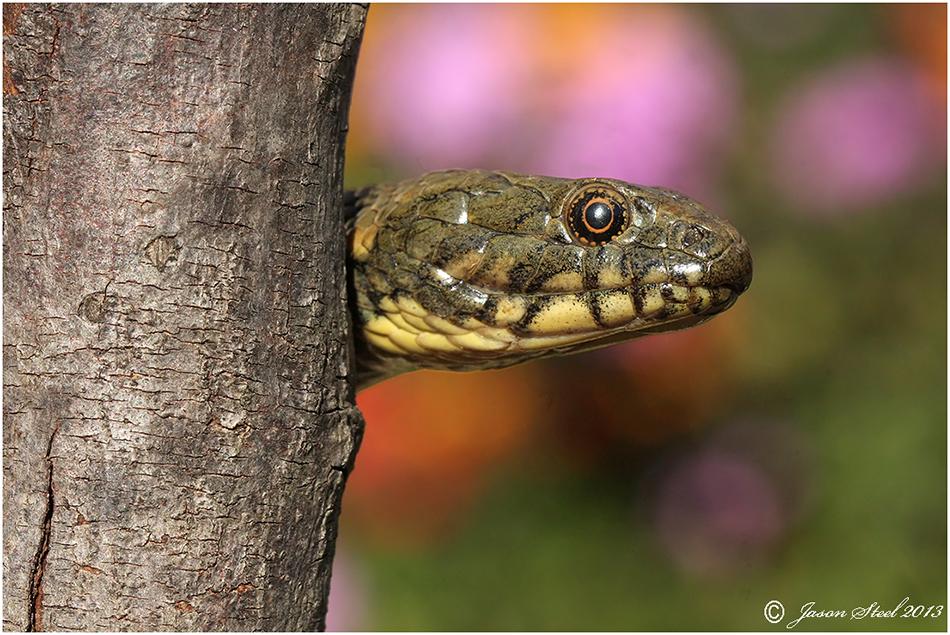
60cm Viperine Water Snake. By a shallow, freshwater stream in Calahonda, Spain. May 2013
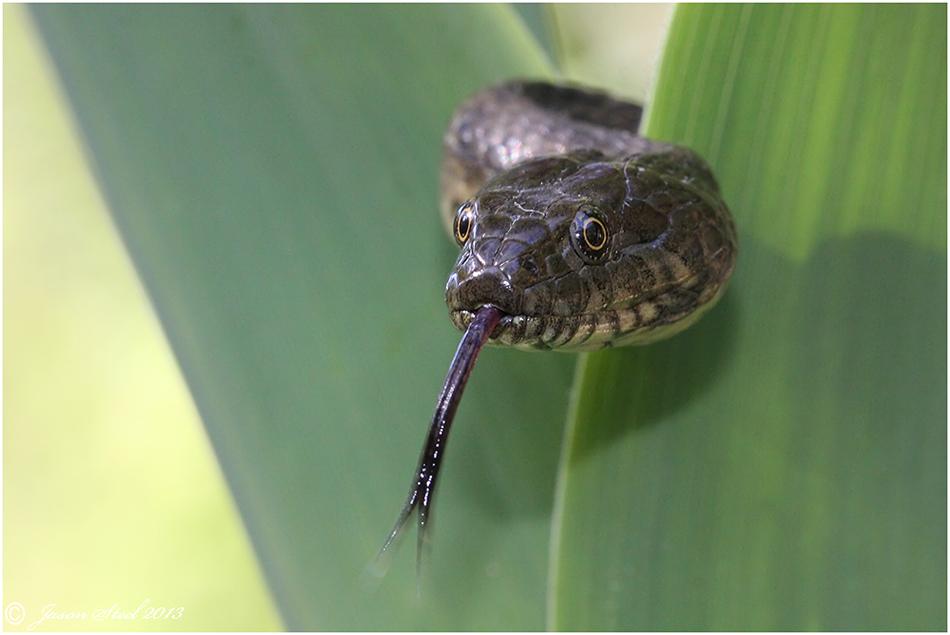
Adult female Viperine Water Snake. By a shallow, freshwater stream in Calahonda, Spain. May 2013
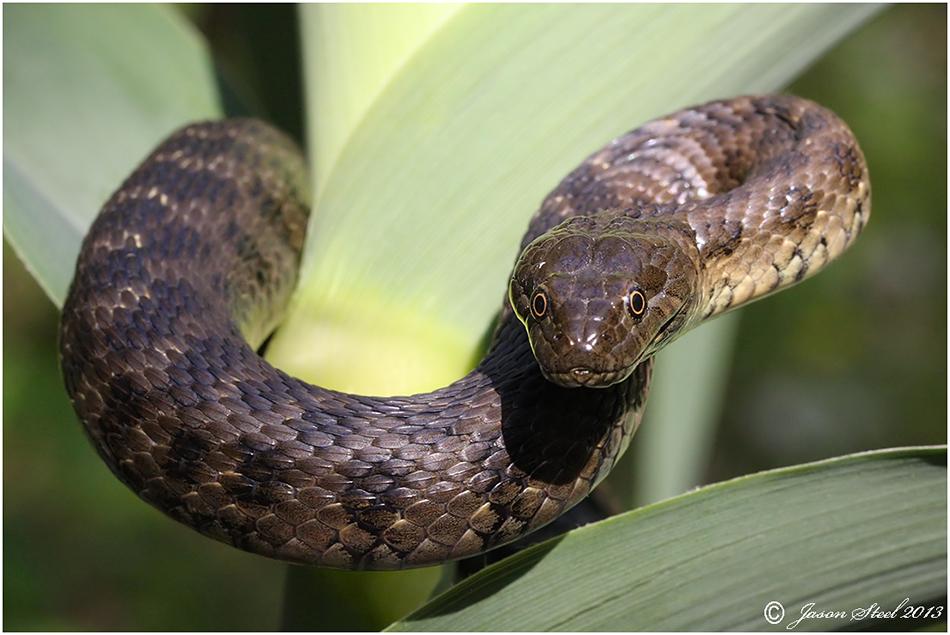
Adult female Viperine Water Snake. By a shallow, freshwater stream in Calahonda, Spain. May 2013
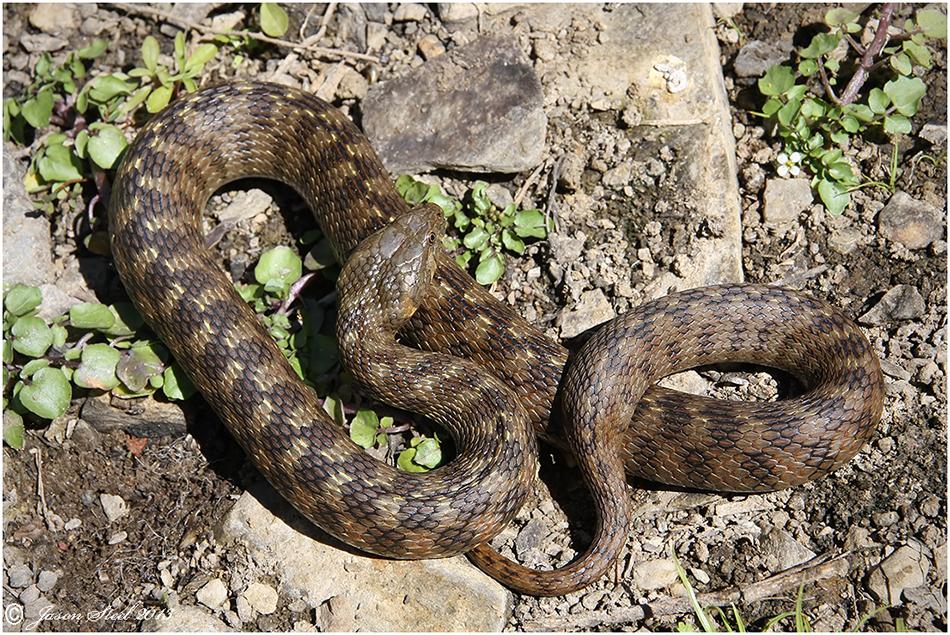
Adult female Viperine Water Snake. By a shallow, freshwater stream in Calahonda, Spain. May 2013
As with many snakes the female is larger and more stocky in build than the male. The female pictured above was around 76cm in total length.
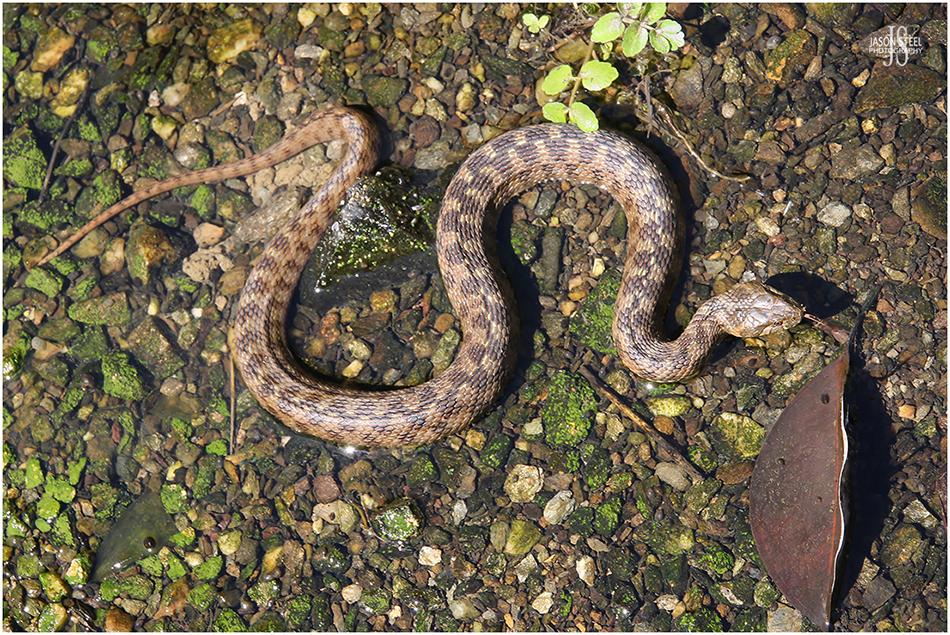
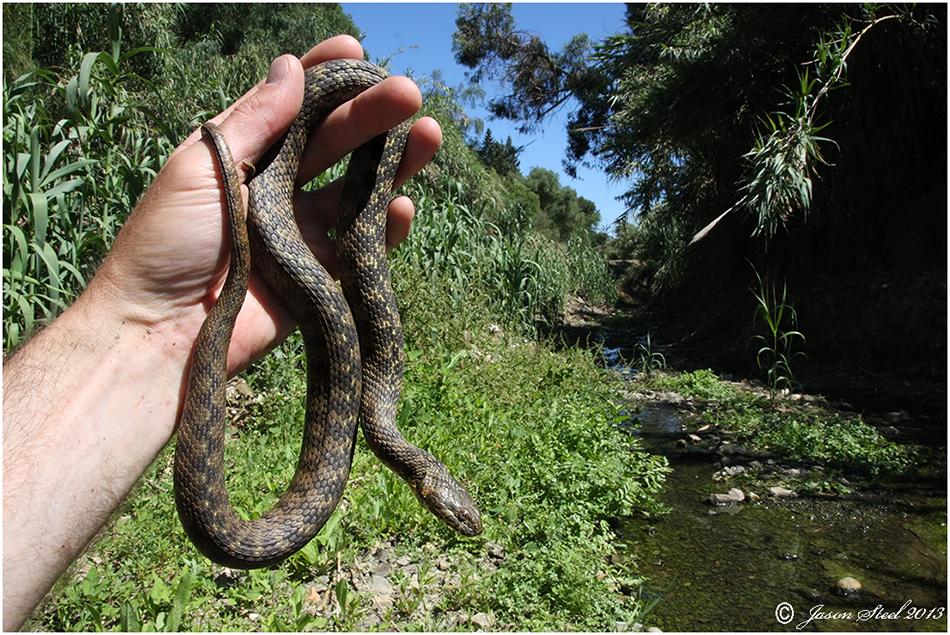
Adult female Viperine Water Snake. By a shallow, freshwater stream in Calahonda, Spain. May 2013
This image shows the typical habitat of the Viperine Water Snake. The water is clear, shallow and slow moving with plenty of vegetation along the banks. There is an abundance of small fish and frogs which the snake will prey on.
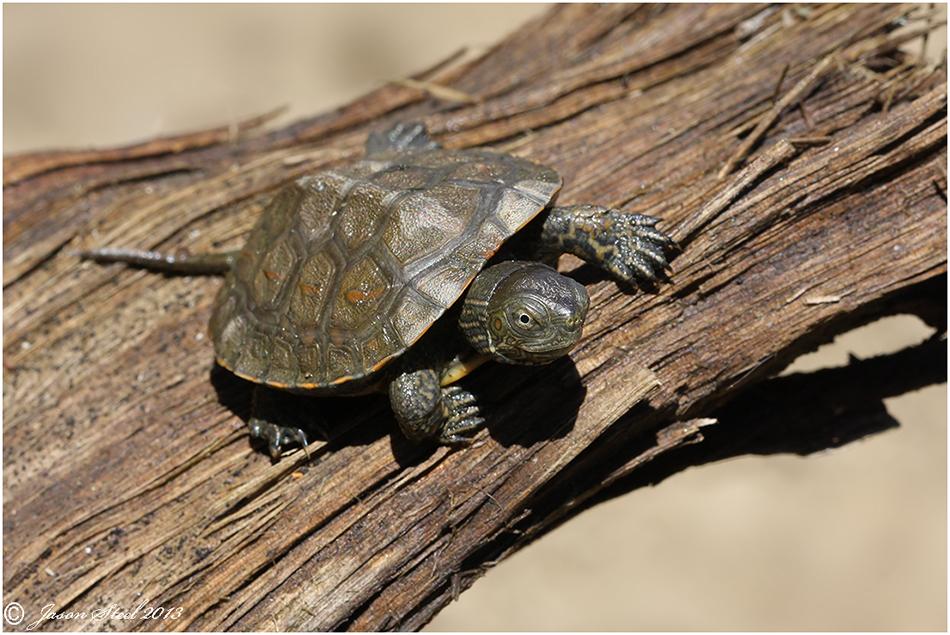
50mm juvenile Spanish Terrapin. Found in a freshwater stream in Calahonda, Spain. May 2013.
Spanish Terrapin - (Mauremys leprosa)
The Spanish Terrapin or Spanish Pond Turtle grows to a maximum length of 25cm and can often be seen basking on the banks of streams or areas of stagnant water. They are always very alert and will very quickly disappear to the bottom of the water if approached.
These terrapins are highly tolerant of pollution and can on occasion be found in even the filthiest of waters.
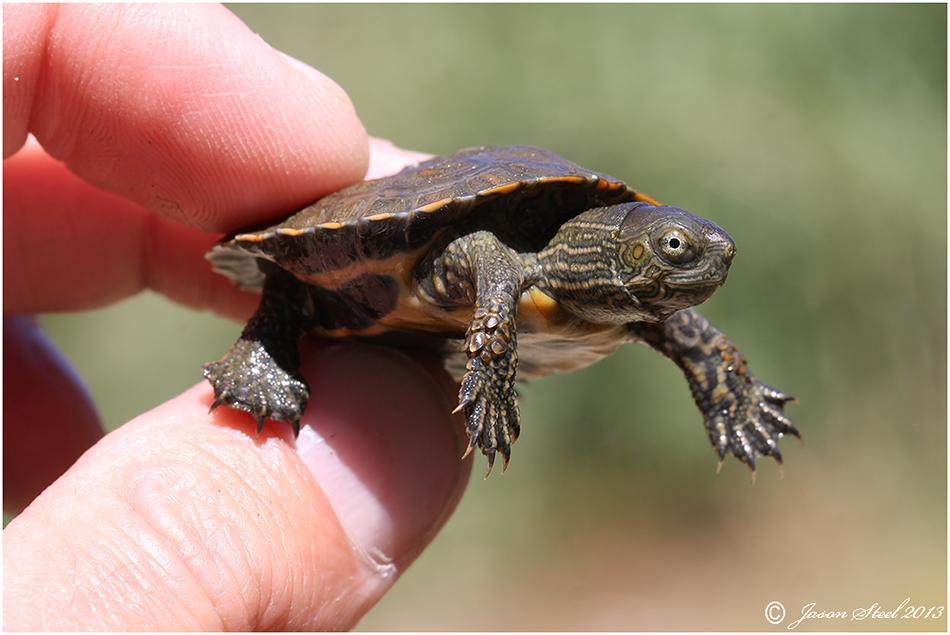
50mm juvenile Spanish Terrapin. Found in a freshwater stream in Calahonda, Spain. May 2013.
When they first hatch these terrapins are just 3cm in length. Although in the wild the adults have very few natural predators, they do now have to compete with the Red-Eared Terrapins (Trachemys scripta) which are a larger introduced species from Mexico and the USA.
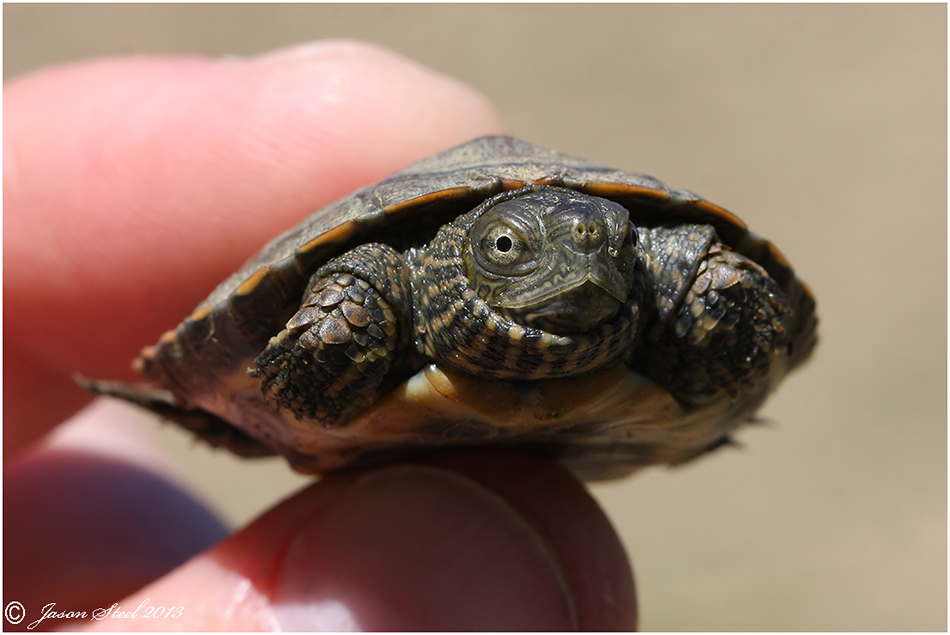
50mm juvenile Spanish Terrapin. Found in a freshwater stream in Calahonda, Spain. May 2013.
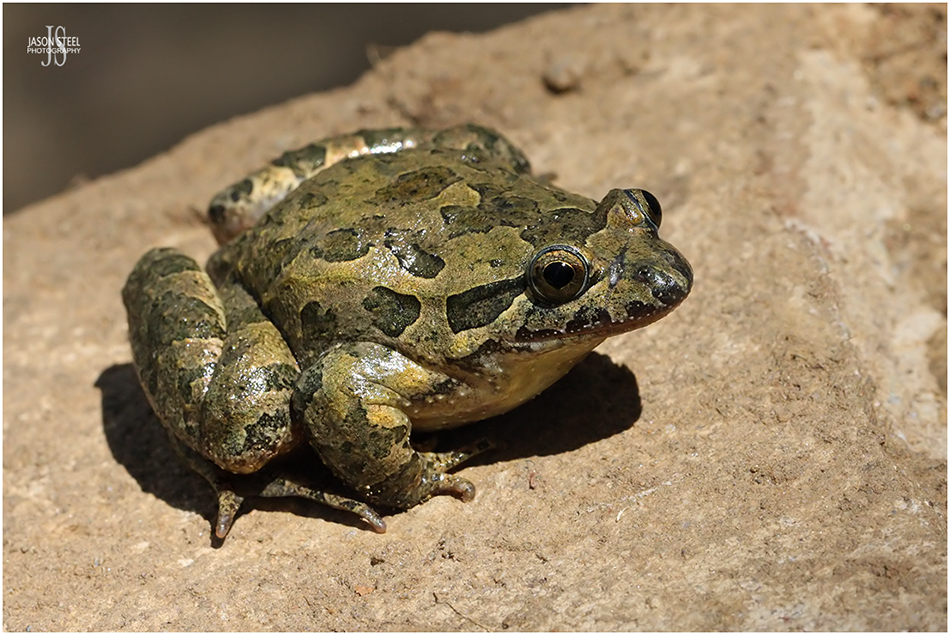
Spanish Painted Frog. Found by a freshwater stream in Calahonda, Spain. May 2013.
Spanish Painted Frog - (Discoglossus jeanneae)
The Spanish Painted Frog is a medium-sized frog, with males typically reaching around 63mm in body-length, and females reaching around 58mm. The top of the Spanish Painted Frog usually exhibits dark spots or stripes, and its underside is white or pale yellow. Adult males can be distinguished by webbing between their hind toes, which is not found on adult females or juveniles. During the breeding season males are even easier to identify as they develop dark calluses on their toes, throat and underside. The Spanish Painted Frog is usually found in and around rivers, lakes, marshes and meadows. The Spanish Painted Frog is endemic to Spain and it is feared it may be declining in numbers.
The Spanish Painted Frog (Discoglossus jeanneae) is very similar in appearance, and habitat preference, to the Iberian Painted Frog (Discoglossus galanoi). The Spanish Painted frog can be distinguished by its slightly shorter snout and smaller forefeet.
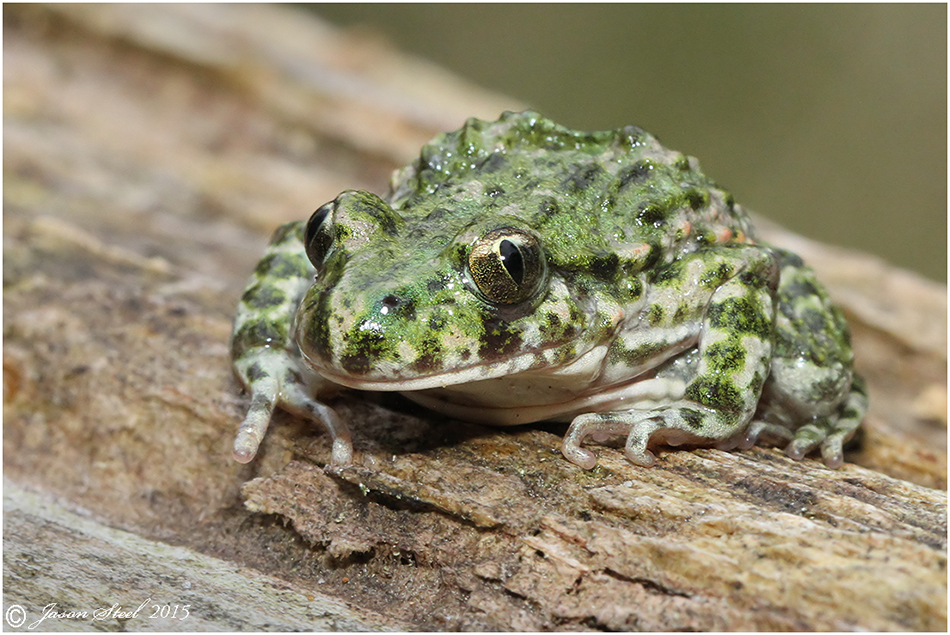
Common Parsley Frog (Pelodytes punctatus). Photographed 15th March 2015
Common Parsley Frog - (Pelodytes punctatus)
The Common Parsley Frog is a small species that typically grows to around 45mm in length for females and 35mm for males. This species is a powerful jumper and can jump 70cm in a single leap. It is sometimes known as the Mud Jumper. The Common Parsley Frog is fossorial, so during the daytime it hides itself away under rocks or logs, or it digs itself into a hole in the mud. The Common Parsley Frog can be found in Spain, Portugal and France, where it inhabits regions from sea level up to 2000m. Breeding occurs twice a year, in spring and autumn. Eggs can be laid in bunches, or strings, attached to aquatic vegetation. This species is very similar to the Caucasian Parsley Frog, Pelodytes caucasicus, which was previously classed as a sub-species.
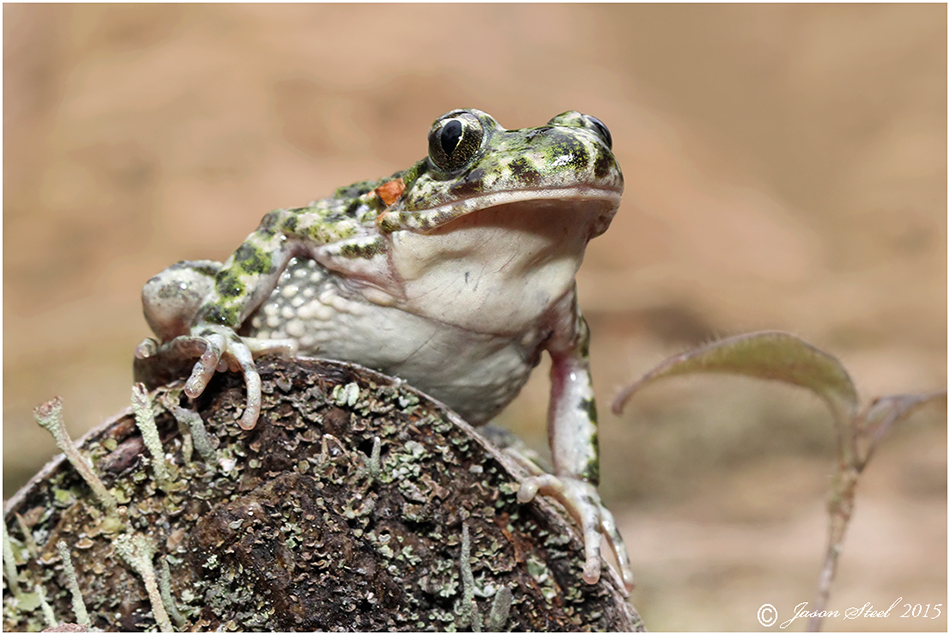
Common Parsley Frog (Pelodytes punctatus). Photographed 15th March 2015
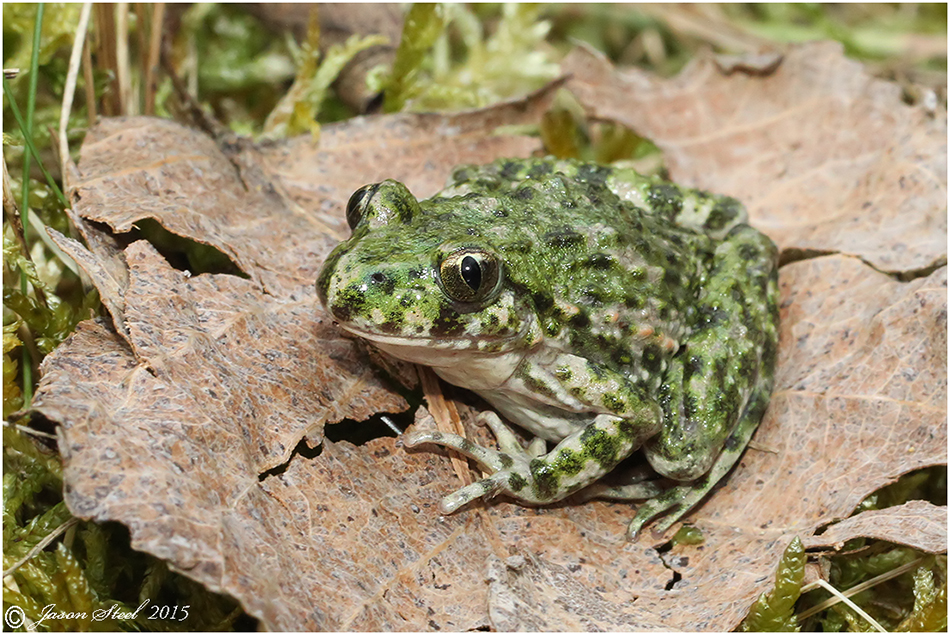
Common Parsley Frog (Pelodytes punctatus). Photographed 15th March 2015
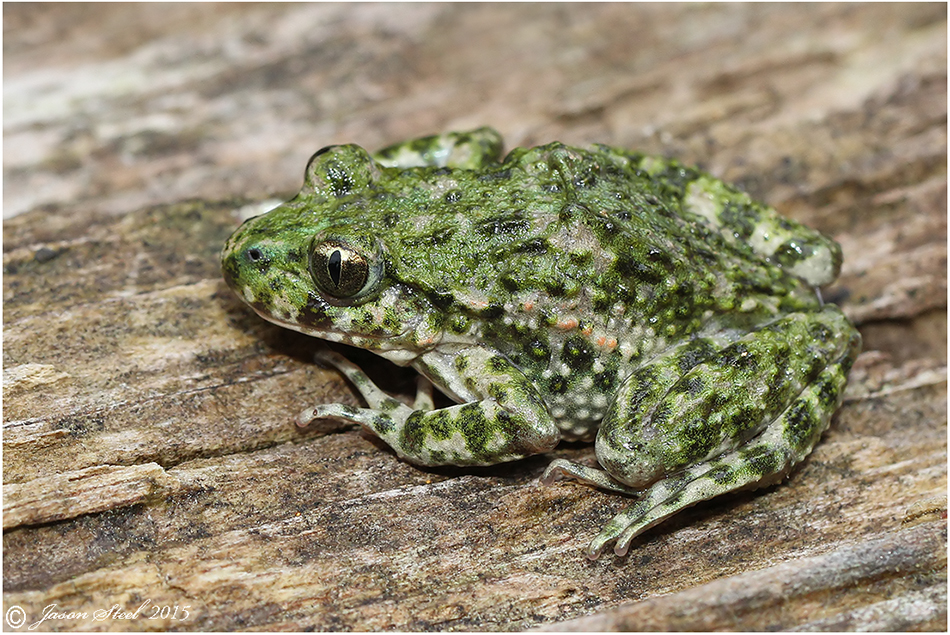
Common Parsley Frog (Pelodytes punctatus). Photographed 15th March 2015
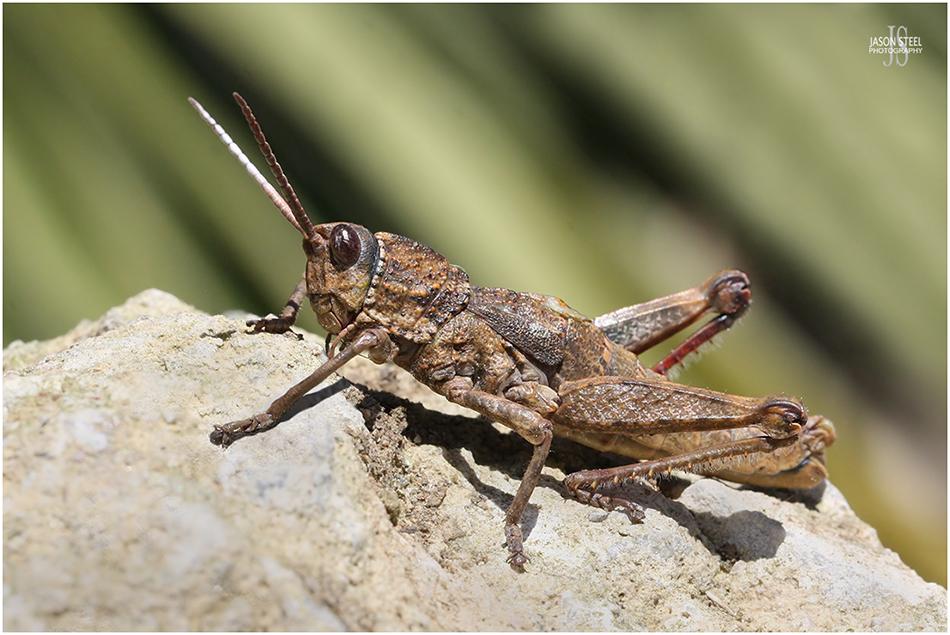
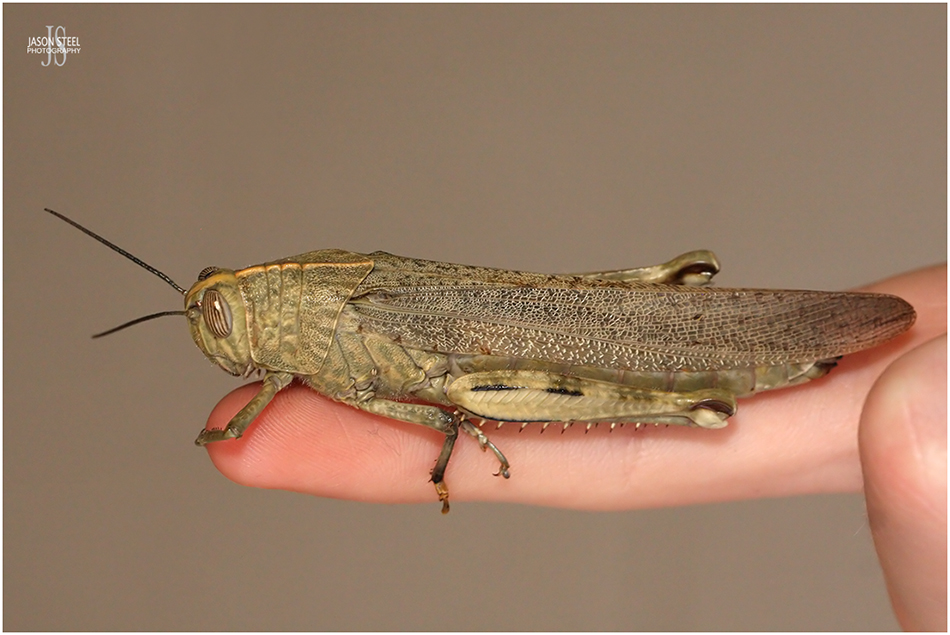
Egyptian Grasshopper, with a body-length of around 80mm. Found in Calahonda, Spain. May 2013
Egyptian Grasshopper / Egyptian Tree Locust - (Anacridium aegyptium)
The Egyptian Grasshopper is a very large and common species of Tree Locust across the Mediterranean. They can also be found across much of Europe and Africa. Both sexes are fully winged and strong fliers. This species is sometimes known as the Egyptian Bird Grasshopper. Juveniles and adults are entirely herbivorous, and are usually seen in bushes and trees, feeding on leaves of various plants. Egyptian Grasshoppers are usually a solitary species and are therefore not often regarded as a pest to crops. I've read conflicting sources, with some claiming that occasionally small swarms of Egyptian Grasshopper can develop, which are capable of travelling relatively short distances. Other sources claim that the Egyptian Grasshopper does not swarm. As a swarm they could be harmful to crops.
Adults males usually reach 35-55 mm in body-length. Females usually reach 65-70mm in length, but sometimes slightly larger specimens measuring over 80mm do occur. The Egyptian Grasshopper varies in colour from a pale stone colour to brown or even green. The eyes have black and white vertical stripes, which along with their large size, make identification of this species fairly easy. Juveniles are born in spring and are usually yellow or green. Initially they have very short wings, which grow with each moult. Adults overwinter.
This species has turned up in the wild in Britain on many occasions. These occurrences are thought to be vagrant specimens or accidental imports.
LINK 1 LINK 2 LINK 3 LINK 4 LINK 5
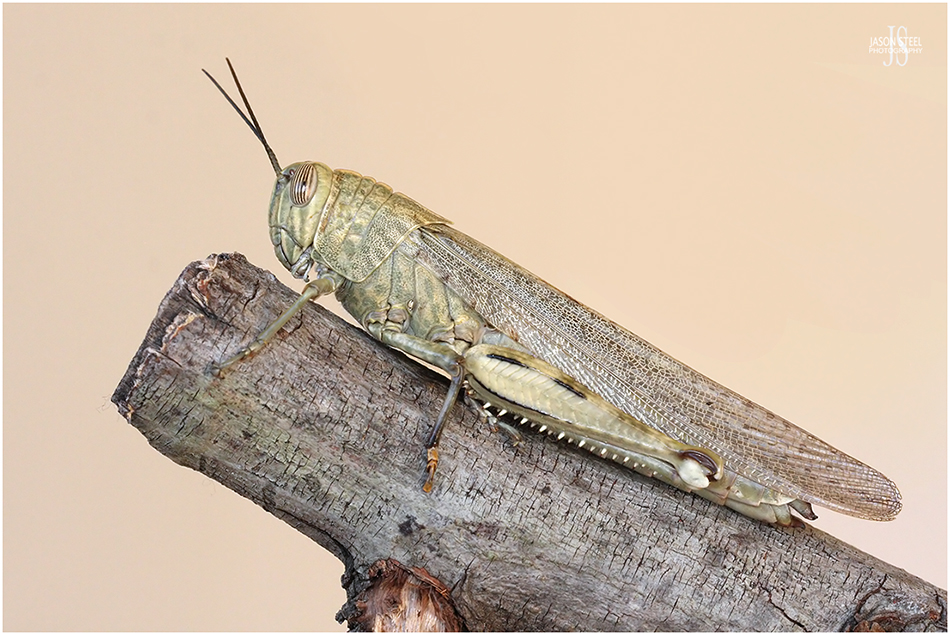
Egyptian Grasshopper, with a body-length of around 80mm. Found in Calahonda, Spain. May 2013
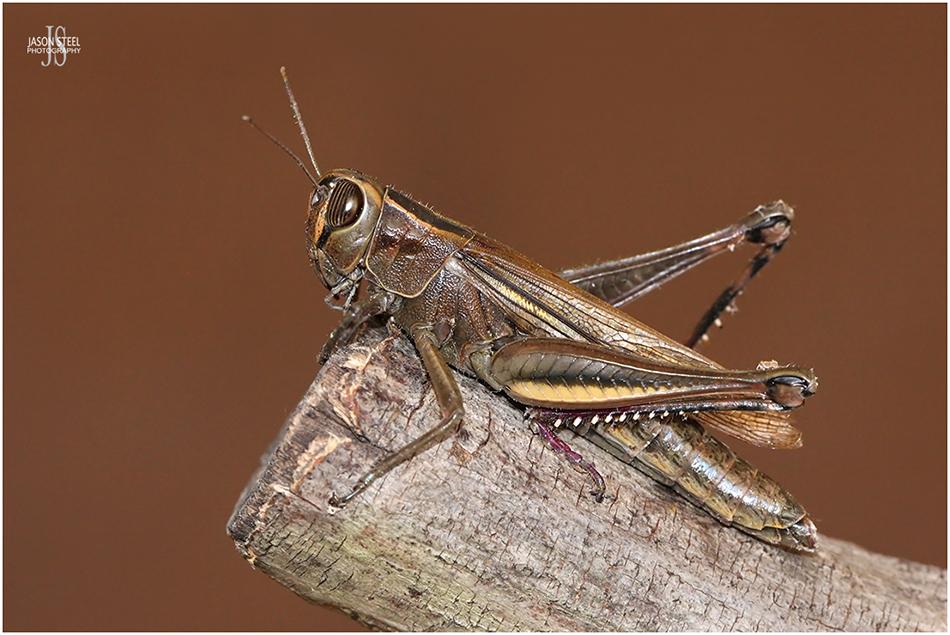
40mm Lamenting Grasshopper. Found in Calahonda, Spain. May 2013
Lamenting Grasshopper - (Eyprepocnemis plorans)
The Lamenting Grasshopper is a medium-sized species reaching around 45mm in body-length. This species is common across southern Europe, the Middle-East and Africa. The Lamenting Grasshopper is herbivorous and feeds mainly on grasses and sedges. It favours wetland areas and coastal vegetation.